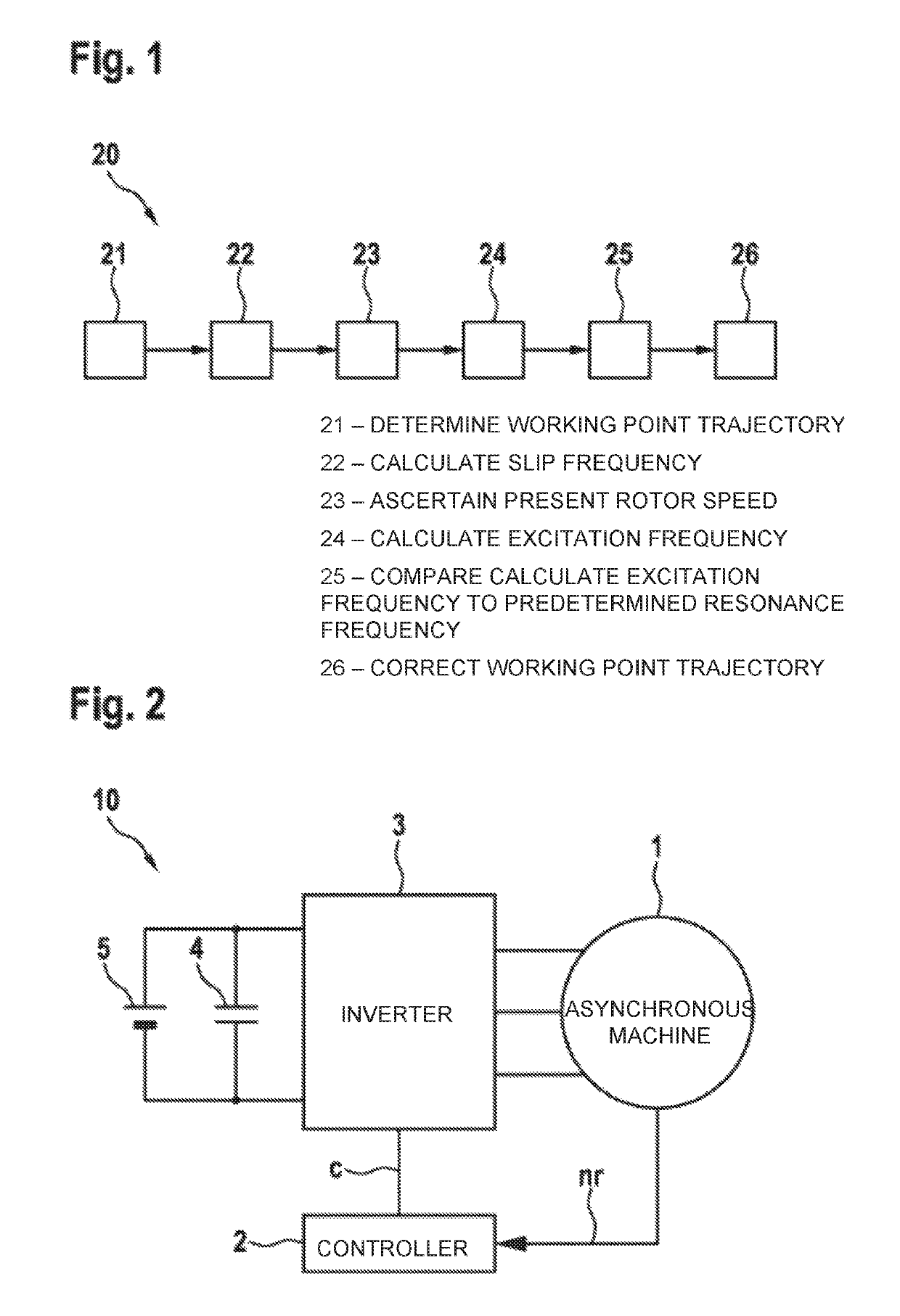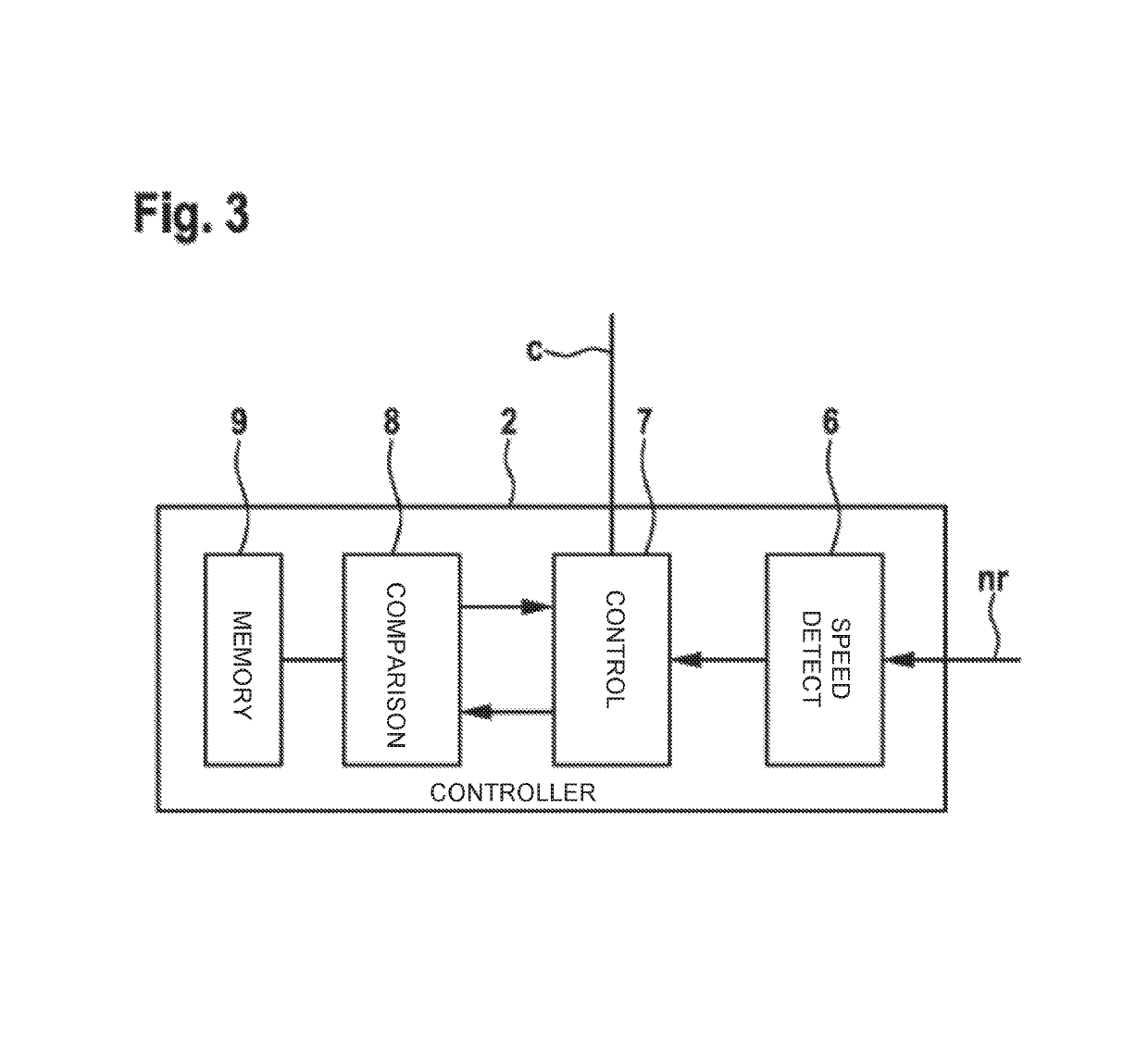Control device for an asynchronous machine and method for operating an asynchronous machine
a control device and asynchronous machine technology, applied in the direction of torque ripple control, dynamo-electric converter control, instruments, etc., can solve the problems of the resonance of the machine and/or the components coupled thereto, and can adversely influence the emitted airborne noise of the electric driv
- Summary
- Abstract
- Description
- Claims
- Application Information
AI Technical Summary
Benefits of technology
Problems solved by technology
Method used
Image
Examples
Embodiment Construction
[0025]In the operation of an asynchronous machine as a motor, there is a difference between the speed ns of the stator and the actual speed nr, i.e., the actual speed of the rotor, and so the actual speed of the rotor is less than the speed of the stator. The difference is also referred to as slip—the corresponding slip frequency fs must therefore be added to the rotor frequency fr=p·nr, which is dependent on the number of pole pairs p of the asynchronous machine, in order to calculate the stator frequency fst:
fst=p·nr+fs
[0026]In the field-oriented closed-loop control of an asynchronous machine, in which the currents through the stator of the asynchronous machine are controlled according to a field-oriented coordinate system having a so-called longitudinal axis d and a quadrature axis q which extends orthogonal to the longitudinal axis, the d-axis therefore always lies in the direction of the space vector of the rotor flux. The space vector of the stator current is therefore compos...
PUM
 Login to View More
Login to View More Abstract
Description
Claims
Application Information
 Login to View More
Login to View More - R&D
- Intellectual Property
- Life Sciences
- Materials
- Tech Scout
- Unparalleled Data Quality
- Higher Quality Content
- 60% Fewer Hallucinations
Browse by: Latest US Patents, China's latest patents, Technical Efficacy Thesaurus, Application Domain, Technology Topic, Popular Technical Reports.
© 2025 PatSnap. All rights reserved.Legal|Privacy policy|Modern Slavery Act Transparency Statement|Sitemap|About US| Contact US: help@patsnap.com


